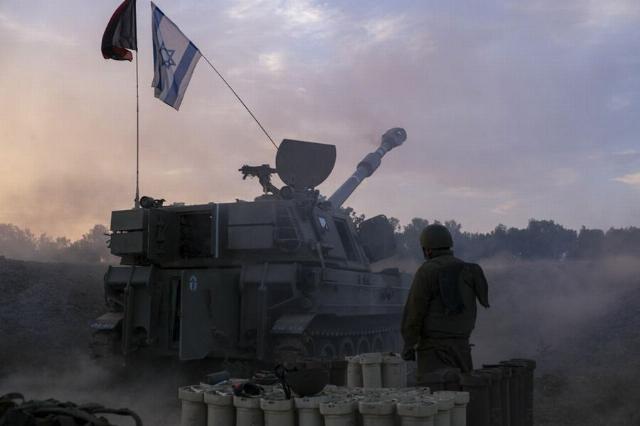Galey IDF: Israel destroyed Iran's strategic defense capabilities
The Israeli strike destroyed all long-range air defense systems in Iran, an IDF source said. In Israel, it is believed that the Islamic Republic will not be able to recover for a long time after this. Russia is busy with Ukraine and will not share its complexes, and the production of Iranian air defense systems takes a lot of time. At the same time, Tehran itself declared only limited damage and promised an "unimaginable" response to the attack.
After the Israeli strike on the night of October 26, Iran completely lost its strategic defense potential, the Israeli army radio Galey IDF reported on Sunday, citing sources in the national security system.
"The attack destroyed all of Iran's strategic defense capabilities. That is, all batteries of long-range anti-aircraft missiles... The IDF assessment is that Iran has lost its strategic capabilities for the next two to three years," [...] Israeli journalist Doron Kadosh also said, citing a source in his country's security system.
According to him, Iran has only short-range anti-aircraft missile systems (SAMs) of its own production. As for long-range missiles, Iran uses two models of air defense systems in total, the journalist said. These are the Russian S-300 and an improved Iranian development. According to Kadosh, all batteries of these two types have been destroyed, as well as long-range detection radars, and Tehran will not be able to quickly restore losses.
"Russia will not be able to provide its systems due to the conflict in Ukraine, and the production of new Iranian-style systems will take a long time," Kadosh explained.
At the same time, Iran has an entire arsenal of more than 2,000 long-range ballistic missiles. In addition to the SAM, Israel did not strike at him, but at the "possibility of producing new missiles." Now Iran will have to save missiles, because, as in the case of air defense systems, it will not be able to increase its reserves in the near future. In addition, the strike did not damage the Iranian drones and related production in any way.
Iran could have responded immediately, but did not
The journalist also revealed details about the attack itself. He said that the main part of the strike on the air defense system fell on Tehran and western Iran.
"In Tehran, of course, we are talking about making the Iranian capital vulnerable. And the west is the area from where Iran launched ballistic missile strikes on our territory," Kadosh said.
In total, more than 140 aircraft participated in the attack, whose crews consisted of more than half reservists (conscripted reserve soldiers). When planning the strike, the IDF assumed that Iran could respond immediately while the Israeli planes remained in the air. According to Israel, the Iranian forces could have fired 200 ballistic missiles at a moment.
In his opinion, the latter is due to how much damage Iran has suffered. Speaking about the reflection of an Iranian response possible in the future, Kadosh drew attention to the growing role of the United States in the defense of Israel. The Pentagon will send Thaad anti-missile systems to the latter along with the US military for their maintenance, as well as three ships that can intercept ballistic missiles.
Earlier it was known that on the night of October 26, Israeli aircraft attacked Iranian military centers in the provinces of Tehran, Khuzestan and Ilam. Iran itself said that its air defenses repelled the attack, and only "limited damage" was received, four Iranian fighters were killed. The President of the Islamic Republic, Masoud Pezeshkian, promised "an appropriate response to aggression," and the head of the Islamic Revolutionary Guard Corps (IRGC), Hossein Salami, stressed that the consequences would be "unimaginable." At the same time, the Iranian Foreign Ministry clarified that the country would respond to the strike at the appropriate time.
Anna Gromova

